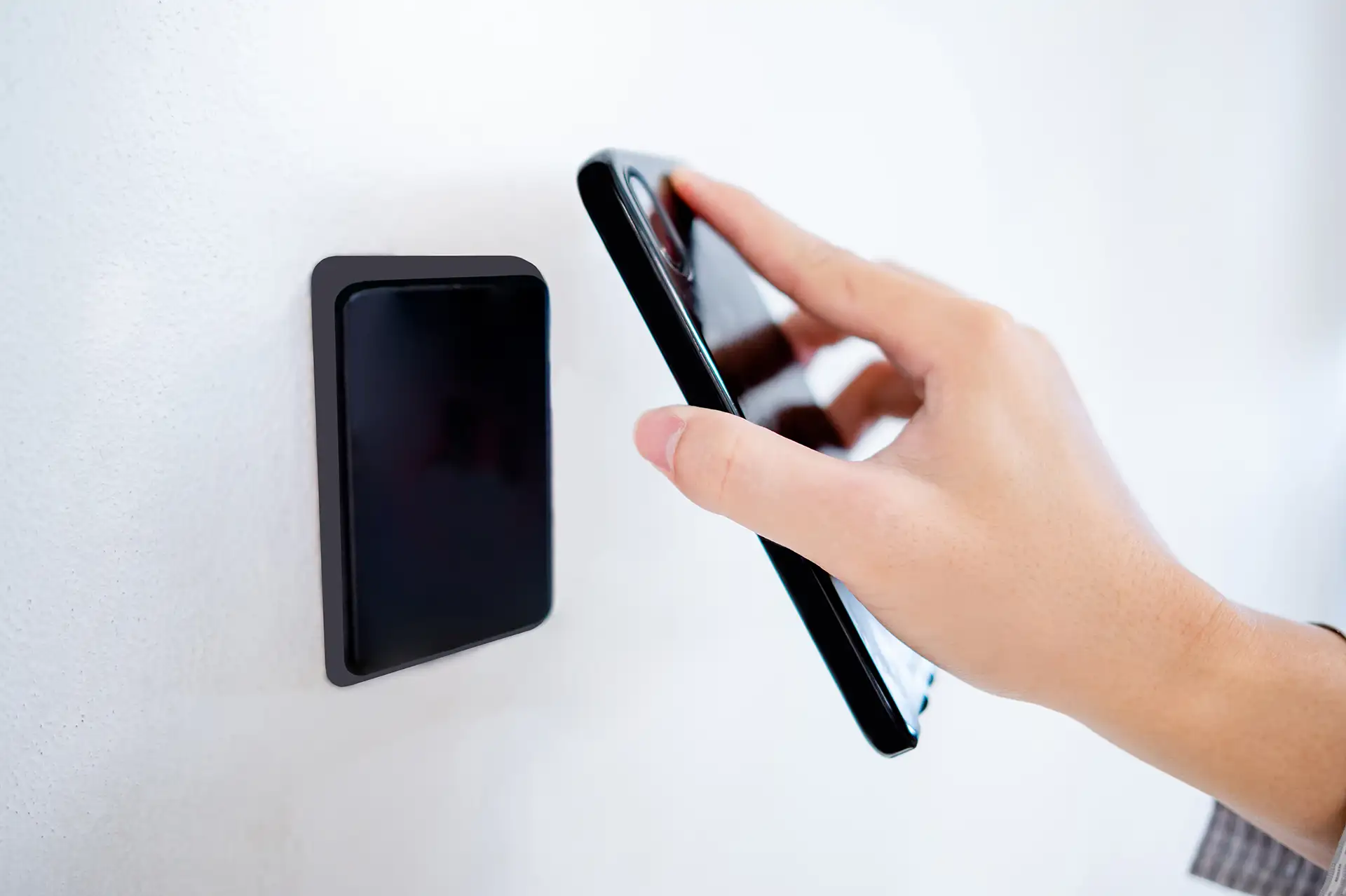Through the widespread adoption of smartphones in the 2010’s and the rise of Bluetooth technology, mobile access credentials emerged as a convenient alternative to physical credentials. Its longer range and flexibility made it suitable for various applications including commercial offices and residential access systems. However, Bluetooth-based access systems come with inherent vulnerabilities that raise questions about their effectiveness in ensuring enterprise safety and compliance.
Key security vulnerabilities in Bluetooth and BLE mobile access
While Bluetooth has revolutionized access control, it was never really meant to be designed to be used for mobile access control. We address the 5 main security concerns associated with BLE below and provide examples:
- Relay Attacks
- Relay attacks occur when an attacker intercepts and relays communication between a legitimate device and the receiver, to bypassing proximity restrictions.
- Example: Many vehicles using Bluetooth “phone-as-a-key” features have been exploited via relay attacks. Attackers use internet-connected relay devices to detect and replicate the phone’s Bluetooth signal, forwarding it to an accomplice near the target. Similarly, smart locks and Bluetooth readers for corporate buildings are susceptible to these attacks.
- Device Spoofing
- Attackers use spoofed Bluetooth devices to impersonate legitimate devices, enabling unauthorized access. A cloned mobile credential can be used to gain entry to secured areas, bypassing access control protocols and permissions.
- Man-in-the-Middle (MITM)
- In a MITM attack, an attacker intercepts and potentially alters communication between devices. These attacks can lead to unauthorized access or data breaches, exposing sensitive information like authentication credentials, personal data, or business communications..
- Side-Channel Attacks
- Exploits on Bluetooth devices based on, power consumption, electromagnetic emissions, or timing information can leak sensitive data.
- Lack of Firmware Updates
- Many Bluetooth devices, particularly legacy systems, do not receive regular firmware updates to patch known vulnerabilities. Outdated Bluetooth firmware can be exploited by attackers to compromise devices, leading to unauthorized access or data theft. This is particularly concerning for organizations using older Bluetooth-based access systems that have not been updated.
These vulnerabilities highlight the need for enterprises to evaluate the security of their access control systems. Bluetooth’s susceptibility to these attacks could lead to:
- Compromised physical security of corporate buildings and assets.
- Increased risk of fines from data breaches and non-compliance with regulatory standards.
- Financial losses due to theft or operational disruption.
- Reputational damage leading to a loss of market share, social capital, and financial capital
To mitigate against the risks associated with Bluetooth and BLE based mobile credentials, enterprises should consider transitioning to NFC (Near Field Communication) offers a more secure alternative to Bluetooth, with a shorter transmission range and resistance to attacks.
Why Sentry Interactive is More Secure Than Bluetooth-Based Systems
Sentry Interactive offers a more secure and modern approach to mobile access control by eliminating the need for Bluetooth, NFC readers, or reliance on outdated hardware. Instead, Sentry Interactive’s cloud service integrates seamlessly with both new and existing physical access control systems connected to the internet.
- No Dependency on Bluetooth or NFC Readers
- Bluetooth and NFC readers are common targets for attacks like spoofing, MITM, and firmware exploits. Sentry Interactive eliminates these risks by relying on secure cloud communication instead.
- Dynamic Credential Management
- Credentials are dynamically managed through the cloud, allowing for easy updates, revocation, and monitoring, unlike static credentials stored on devices, NFC cards, or offline access control systems.
- Geofencing and App Interaction
- By combining geofencing or IP address restrictions with manual app interaction, Sentry Interactive’s system ensures that access cannot be granted unless the user is both physically present and actively engaged.
- Seamless Integration Without Hardware Replacement
- Sentry Interactive’s software-based approach allows organizations to upgrade their access control systems without replacing existing card readers or installing new hardware. This reduces costs while improving security.
Conclusion
While Bluetooth and BLE-based access mobile credentials have provided convenience, their inherent vulnerabilities present significant security challenges. From relay attacks and man-in-the-middle exploits to device spoofing and side-channel attacks, the widespread adoption of Bluetooth makes it a prime target for cyberattacks. Additionally, concerns such as increased battery drain, and the lack of regular firmware updates further underscore its limitations.
Enterprises must recognize that while Bluetooth offers convenience, its security shortcomings could lead to compromised physical security, data breaches, and regulatory non-compliance. Transitioning to NFC provides a robust alternative, offering shorter transmission ranges and stronger resistance to attacks. Though traditional NFC implementations may be cost-prohibitive, innovative software-only solutions now enable organizations to upgrade securely without the expense of replacing existing reader hardware.
By leveraging these advancements, enterprises can enhance their access control systems, reduce cybersecurity risks, and future-proof their infrastructure in an increasingly digital and network reliant world. Prioritizing secure and cost-effective solutions is key to staying ahead of emerging threats and maintaining trust in access control technologies.
Get in touch to find out more about how organizations can enhance their access control systems, reduce cybersecurity risks, and future-proof their infrastructure with Sentry Interactive’s solution.


